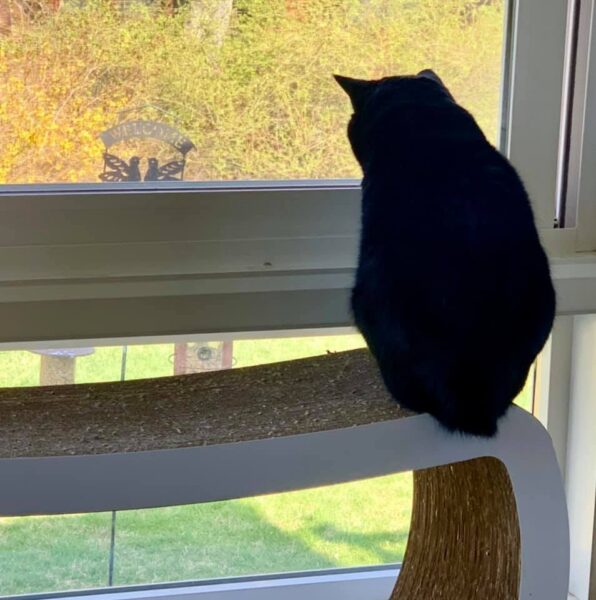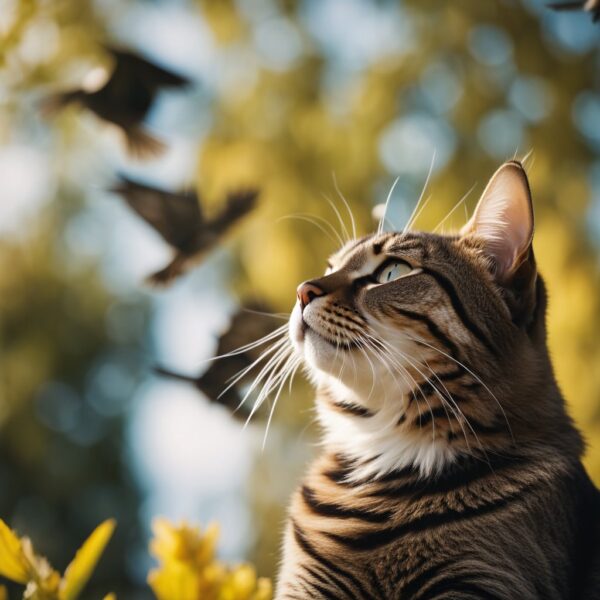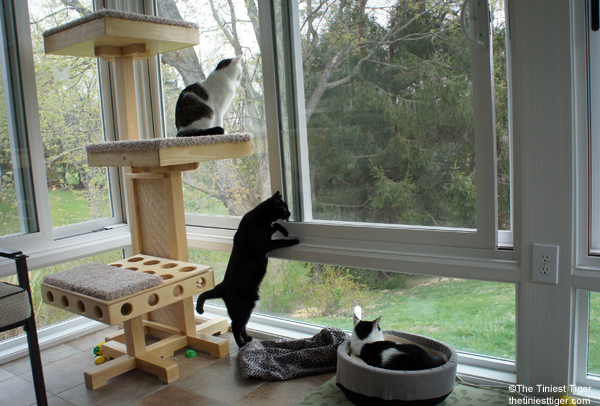
What Cat Guardians Need to Know Now
The H5N1 bird flu, a concern that has emerged within the feline community, poses a severe risk to domestic cats. With an alarmingly high mortality rate in affected cats, this avian virus has catapulted to the forefront of veterinary health discourse. Notably, a significant number of cases have been observed in cats residing on dairy farms, although incidents within exclusively indoor environments, such as a case in Oregon where a cat succumbed to the virus after consuming raw food, demonstrate the virus’s potential to cross boundaries. A tragic event at a wildlife sanctuary underscored the virus’s lethality, as a majority of their big cat residents perished due to this strain.
As the veterinary community continues to unravel the intricacies of the H5N1 virus, it has become clear that preventing its spread is of great importance to safeguarding not only bird populations but our feline companions as well. With limited cases reported at present, the opportunity for containment and preventative action is critical to avert a wider outbreak. Understanding the virus, its transmission routes, and methods to protect domestic cats are imperative for cat parents to ensure the safety of their pets.
Key Takeaways
- H5N1 bird flu presents a high mortality risk to domestic cats.
- Both indoor and outdoor cats are susceptible to the virus, with cases reported in diverse environments.
- Proactive measures are crucial to protect cats and prevent the spread of H5N1.

Recent Concerns Over H5N1 Virus
Highly pathogenic avian influenza (HPAI), specifically the H5N1 subtype, first appeared in felines within Texas during early 2024. The incidence of this avian influenza strain has since been observed in multiple states including Colorado, Washington, Oregon, and California. Concern has escalated due to this geographic spread.
Birds, both wild and domestic, are at risk of getting bird flu, and spreading it to cats
Avian influenza, commonly known as bird flu, poses a threat to various birds, from wild species to domestic poultry. Infected birds can transmit the virus to cats that prey on or ingest them, or come into contact with bird droppings. Additionally, pet birds that encounter outdoor environments can contract the virus, increasing the risk of interspecies transmission.
H5N1 Presence in COW Milk
In instances where dairy cattle remain without symptoms, they can still harbor the H5N1 virus, subsequently contaminating their milk. While pasteurization processes are designed to eliminate most pathogens, they may not fully eradicate every trace of H5N1. Given the dense population and pathogen-rich environments typical of dairy farms and poultry areas, the contagion of diseases like H5N1 can readily occur.
The Elevated Risk of H5N1 for Felines
H5N1, a type of bird flu, poses a significant health threat to cats. This influenza virus strain has resulted in severe illnesses and fatalities among both birds and cats. While dogs appear less affected, H5N1 remains a critical concern for feline health.
Current Understanding of H5N1 Transmission to Humans via Cats
At present, there is a lack of evidence to suggest that cats can transmit the H5N1 virus to humans. Viral mutations are a known factor in the spread of diseases; however, measures are in place to monitor and mitigate any such changes. Practitioners in veterinary clinics are vigilant, understanding the grave implications of an interspecies jump, especially to humans.
Cat parents are advised to take precautions to prevent their pets from contracting the H5N1 strain. Preventive strategies are garnering attention as they play a crucial role in safeguarding both human health and the health of domestic mammals.
Reconsidering Raw Diets During Disease Outbreaks
In light of the H5N1 virus’s impact on domestic felines, caution must be exercised with their diets. Contaminated raw foods have been the primary source of transmission to indoor cats. Transitioning to alternative diets is advisable until the risk subsides. This includes ceasing feeding raw poultry, as it’s not just the primary source but also a potential carrier of the virus due to cross-contamination with other raw proteins.
For those questioning the safety of alternative raw options such as freeze-dried raw or foods treated with High Pressure Processing (HPP), the concern remains valid. Even HPP-treated products, like those from Northwest Naturals, have been implicated.
Switching to a high-quality canned diet might be necessary. Certain exotic proteins like rabbit, venison, and lamb—not commonly associated with outbreaks—might be safer choices. When selecting such alternatives, it’s beneficial to consider the origins of these foods. Countries with stringent pet food regulations, such as New Zealand, might offer safer options due to their isolated location and strict controls.
Also, avoid offering raw milk to cats. Despite occasional indulgence in dairy treats, raw milk poses a health risk as it may harbor harmful pathogens, including H5N1. Tragically, the consumption of raw milk has been linked to fatalities among felines, a stark reminder of the potential risks associated with unpasteurized dairy products.
In conclusion, while feeding raw diets might have been a preference before, the emergence of H5N1 necessitates a reevaluation of feeding practices for the safety of cats. Choosing safe, high-quality, and appropriately processed food sources can help protect them during this time.

Limit Your Feline’s Outdoor Exposure
Cat parents should exercise caution to mitigate the risks of H5N1 bird flu transmission to their pets. Cats that roam outside unsupervised may interact with infected birds or their droppings, putting them at potential risk for infection. It is critical to monitor the health of domestic birds and to restrict cats’ outdoor access if there are reports of H5N1 in the local area.
For cats that are used to the outdoors, consider constructing a secure outdoor enclosure—a “catio”—to prevent direct contact with wild birds. In scenarios where avian influenza is a concern, indoor confinement is strongly advised to protect the health of your feline companion.
If there is an encounter with a dead or sick bird, contact your local animal control, do not handle the bird, and ensure to cleanse any clothing or footwear that may have come into contact with the bird before interacting with your cat. This approach reduces the likelihood of spreading the virus to indoor spaces. It is crucial for cat parents to remain vigilant, even when walking their cats with a harness, as outdoor environments can harbor infectious agents.
Enhanced Safety Measures for Feline Welfare Workers
Individuals involved in cat rescue operations or the management of feral cat colonies should adopt stringent preventive protocols. It is advisable to dedicate a set of clothing and footwear solely for use during rescue activities or sanctuary visits. Upon completion of these duties, they should promptly remove their attire and commence a laundry cycle to mitigate any risk of contagion. Ensuring thorough personal hygiene before interacting with personal pets is crucial.
In instances where a cat exhibits signs of illness, immediate isolation and a veterinary consultation are urgent to prevent the transmission of diseases within the group. Consistent vigilance and prompt action in these scenarios are key to protecting the health of both the feral population and domesticated felines.
Recognizing H5N1 Infection in Cats
Should your cat display certain concerning symptoms, prompt attention is critical. Indicators of infection may include:
- Decreased hunger: An abrupt or noticeable decline in appetite is a common sign that should not be ignored.
- Weakness: Cats may exhibit general fatigue or less interest in regular activities.
- Elevated body temperature: Like humans, cats can develop a fever when ill.
- Ocular or nasal discharge: Any unusual discharge from the eyes or nose warrants attention.
- Respiratory difficulty: Labored breathing or other respiratory problems are notable symptoms.
- Neurological irregularities: Watch for signs such as shaking, coordination problems, or convulsions.
These signs are not unique to the H5N1 virus but can suggest a severe infection. The onset of the disease in cats can progress rapidly, necessitating immediate veterinary care. In handling potential cases of the H5N1 virus, veterinary professionals may employ protective measures to prevent the spread of the virus, indicative of the gravity of the situation. It’s essential to monitor these symptoms and seek veterinary guidance to ensure the well-being of your feline companion.
Common Questions About Feline Bird Flu Protection
Symptoms of Avian Influenza in Felines
Cats infected with bird flu may exhibit various symptoms, which can include respiratory distress (e.g., coughing, sneezing), fever, lethargy, and loss of appetite. Behavioral changes or abnormal posture due to discomfort may also be observed.
Transmission of Bird Flu Between Cats and Other Animals
Currently, there is no confirmed evidence that cats can contract bird flu from dogs or other household pets. However, cats can contract the virus through direct contact with infected birds or their secretions.
Strategies to Protect Cats Against Bird Flu
- Keep cats indoors to limit their exposure to wild birds or contaminated environments.
- Practice good hygiene, including washing hands before and after handling your pet.
- Disinfect any items that come in contact with birds.
Precautionary Measures During an Avian Flu Outbreak
- Avoid contact between your cat and any wild or domestic birds.
- Monitor local health advisories and follow instructions from veterinary authorities.
- Reduce the chance of exposure to the virus by securing outdoor areas where cats may encounter birds.
Availability of a Bird Flu Vaccine for Cats
As of the current knowledge, there is no widely available vaccine against bird flu for cats. Vaccines are primarily developed for poultry and other birds.
Identifying Bird Flu in Wild Birds
Signs of bird flu in wild birds can be sudden death or symptoms similar to those in cats, such as difficulty breathing or neurological impairment. If you notice multiple sick or dead birds, report to local wildlife authorities promptly. Do not handle the birds yourself.